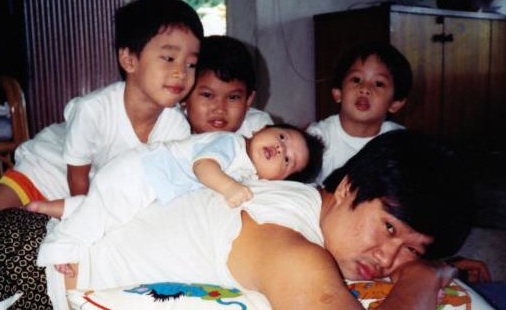There is a whole list to the causes of hydrops. Typing every single condition would not be beneficial. I feel that work-up to the cause of hydrops should be aimed to detect maternal conditions that may lead to hydrops as well as anomalies that may recur. This is to prevent recurrence, if possible, in future pregnancies as mortality of neonates with hydrops is at 50% depending on the cause of hydrops.
DIAGNOSIS
Diagnosis are usually made antenatally with detection of the following:
- Skin edema
- Scalp edema
- Ascites
- Pleural effusion
- Pericardial effusion (most difficult to see)
I will not list all the possibilities but most of the common and important ones:
Immune-mediated:
Rhesus alloimmunization
Nonimmune causes:
Congenital anomalies
- Cystic hygroma
- Turner's (XO monosomy)
- Trisomies (21 most common)
Hematological
- Alpha thalassaemia
- Massive fetomaternal hemorrhage
Cardiac anomalies (all sorts)
Thoracic anomalies
- Congenital cystadenomatoid malformation (CCAM)
- Any mass/lesions that may cause increase thoracic pressure
Infections
- TORCHES (Toxoplasmosis, rubella, cytomegalovirus, Herpes simplex, syphilis [most common])
- Parvovirus B19
Metabolic Disorders
ie. Gaucher's disease, Tay-Sach's disease, sialidosis, generalized (GM1) gangliosidosis
Twinning
- Twin-twin transfusion syndrome
Others
- Skeletal dysplasias
WORK-UP
Antenatal
As usual, history from the mother should be obtained when hydrops is first detected. Family history of genetic anomalies, consanguineous marriage should be obtained. Recurrence are more likely in families with such histories ie. Alpha thalassaemia, metabolic disorders (which most are autosomal recessive), congenital anomalies.
History of exposure to infections may also be beneficial.
Rhesus negative mothers should always be ruled out.
Other associated anomalies may be looked for and detected during the initial ultrasound or repeated in more expert hands later. Amniocentesis for fetal karyotyping may be obtained after counselling. If infection is suspected, amniotic fluid may be sent for cultures or PCR if facilities are available.
Postnatal
Evaluation of the neonate post-delivery should always be after initial resuscitation as these fetus tends to have turbulent births.
Relevant physical examination:
- Cyanosis - may indicate underlying structural heart anomaly
- Hepatosplenomegaly - metabolic disease, congenital infections
- Features of Turner's, Down's and other features of chromosomal anomalies
- Congenital anomalies - cystic hygroma, dysplasia
- Hypotonia - metabolic disorders, dystrophies
- Placenta - in case of TTTS
- FBC - To rule out anemia or determine severity of anemia
- PBF - To look for hemolysis
- Kleihauer-Betke test - if fetomaternal hemorrhage suspected
- ECG - to rule out arrythmias
- Echocardiography - to rule out cardiac anomalies
- Chest x-ray (Pleural effusion, CCAM)
- Infection screen (TORCHES)
- Karyotyping (if not yet done antenatally and if suspicious of chromosomal anomalies)
- Metabolic screen (for metabolic diseases)
Postmortem:
If the fetus delivers as a stillbirth or had an early neonatal death, postmortem may be important to determine underlying anomalies or condition.
Determining the cause of hydrops is important to rule out causes that are potentially preventable or predictable, especially those associated with chromosomal anomalies. Future pregnancies may be followed-up more carefully with anticipation of treatment better. Mothers should always be counselled for possibilities for recurrence and next pregnancy planned well.
As mentioned this article only covers some of the causes and work-up for the hydrops patient. Mode of delivery, management of the fetus is not discussed in details here but both depends on the cause of hydrops and after further discussions with the parents.
References:
Creasy, Robert K., et al., Maternal Fetal Medicine, Principles and Practice, 6th Ed.
Speer, Micheal E., Postnatal Care of Hydrops Fetalis, Up-to-Date Article, 2012.

